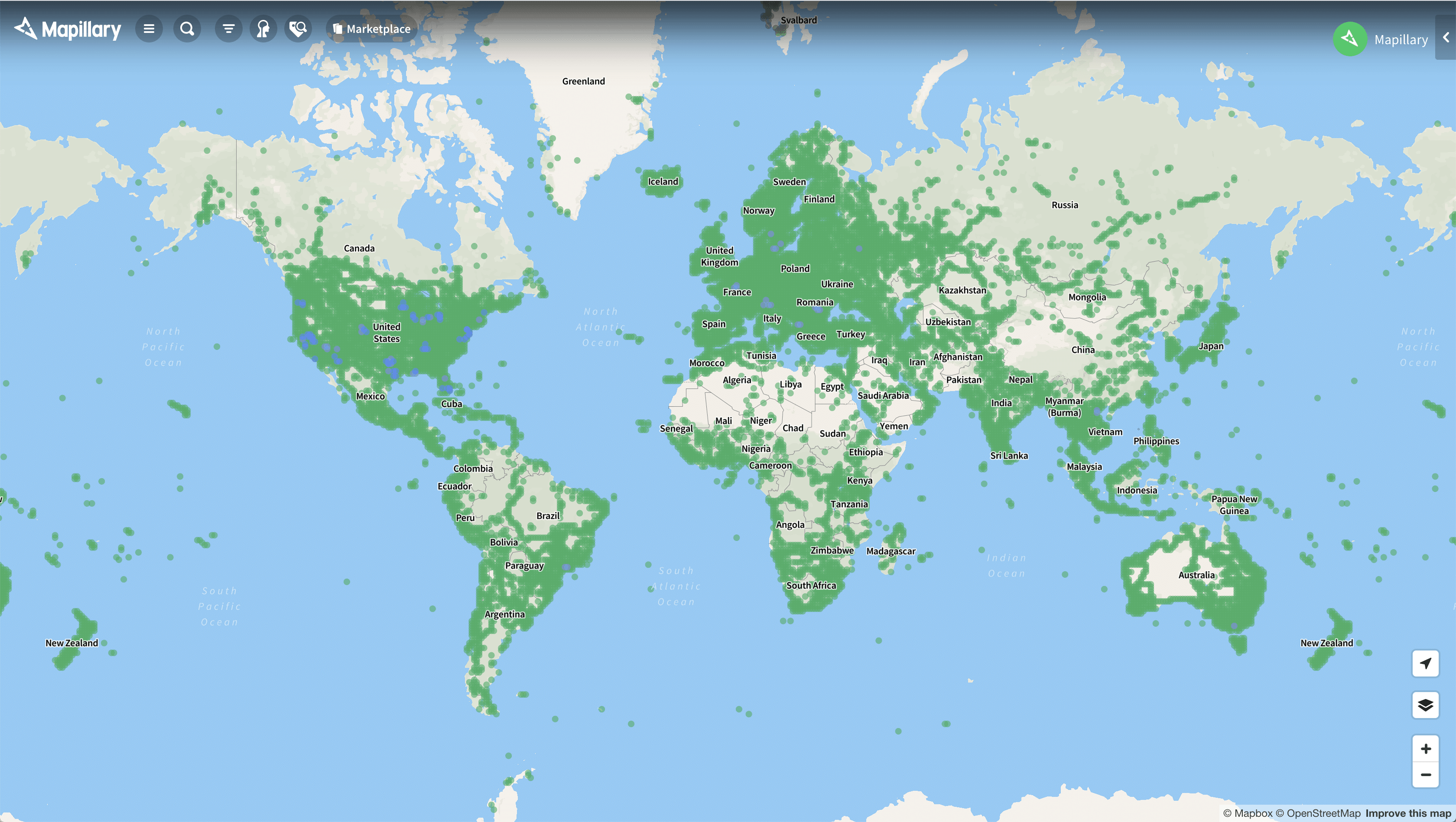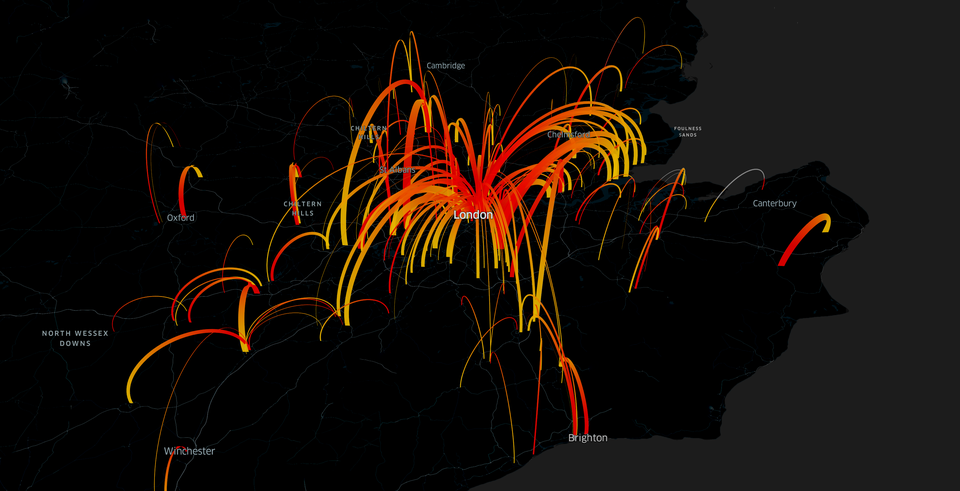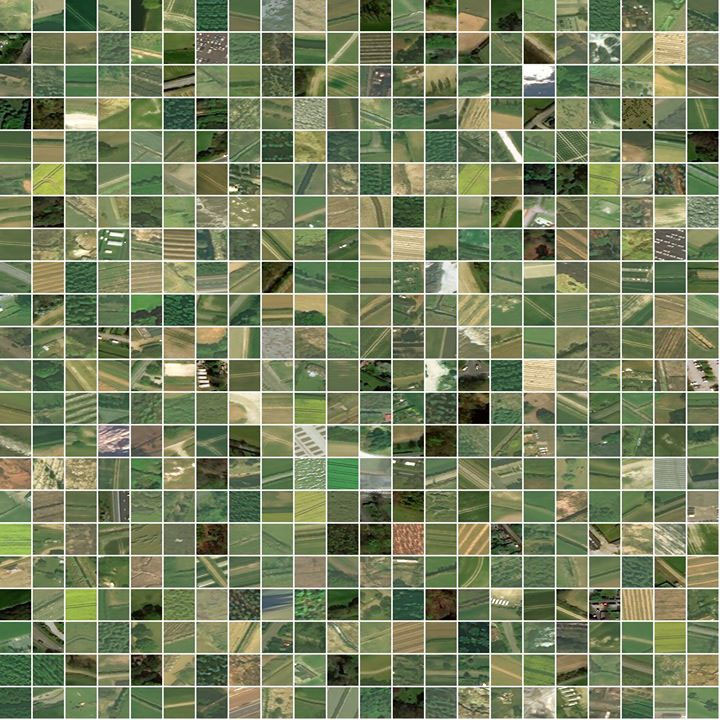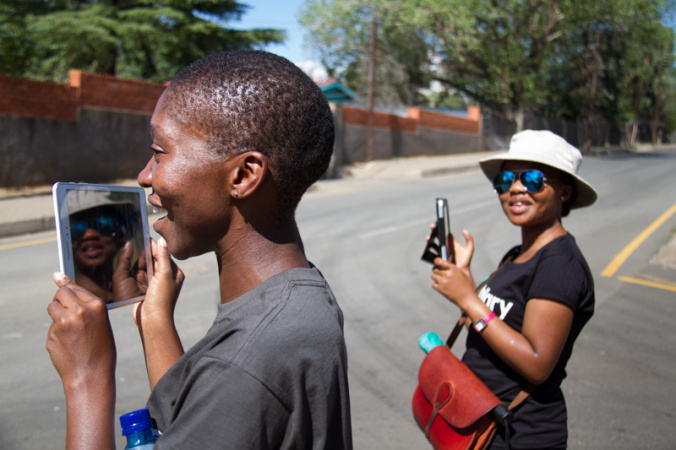
Spotify world map shows most popular song named after every country
June 21 is World Music Day. Which means there’s no better time than now to go on a melodious journey around the world.
With more than 286 million users and 130 subscribers worldwide, Swedish streaming service Spotify enjoys explosive popularity amongst music lovers. For World Music Day, Budget Direct decided to search the Spotify app for every country’s name and picked out the songs with the most plays.
Did you know every country has a song named after it? From The Bouncing Souls’ Letter from Iraq to David Guetta’s Montenegro, there’s a song for each nation on our planet!
These eclectic songs – some international hits, many little-known secrets – are the unofficial national anthems that have caught the public’s imagination and got their feet tapping. Here are the top 10 most listened-to songs named after countries:
| Artist | Song title | Country | Streams |
| 1. Anuel AA, Daddy Yankee, KAROL G | China | China | 632m |
| 2. Shawn Mendes | Lost in Japan | Japan | 501m |
| 3. Vance Joy | Georgia | Georgia | 301m |
| 4. Rae Sremmurd, Swae Lee, Slim Jxmmi | Guatemala | Guatemala | 190m |
| 5. Bruce Springsteen | Born In The USA | USA | 189m |
| 6. Van Halen | Panama | Panama | 133m |
| 7. We Walker | Jordan Belfort | Jordan | 107m |
| 8. The Bangles | Walk like an Egyptian | Egypt | 106m |
| 9. Declan Mckenna | Brazil | Brazil | 101m |
| 10. Rihanna | Russian Roulette | Russia | 932k |
Can you spot them in the world map below?
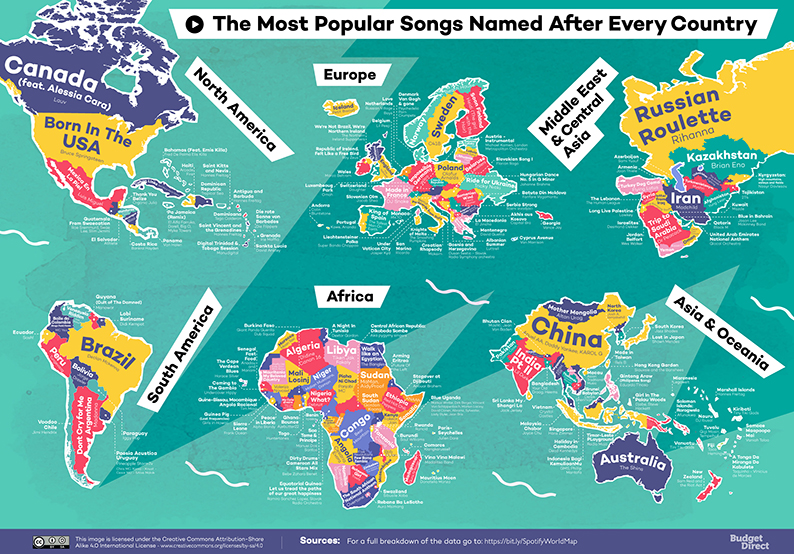
Stop struggling! Let’s just zoom in…
Tens of millions of Americans search for Born In The USA on Spotify every Fourth of July.
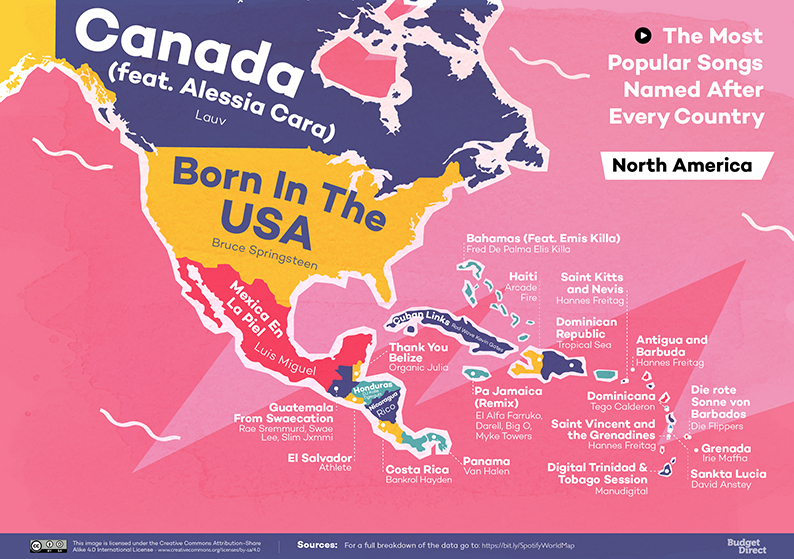
In South America, 16-year-old Declan McKenna’s Brazil, produced in response to the economic inequalities surrounding the 2014 FIFA World Cup, has over 100 million streams on Spotify.
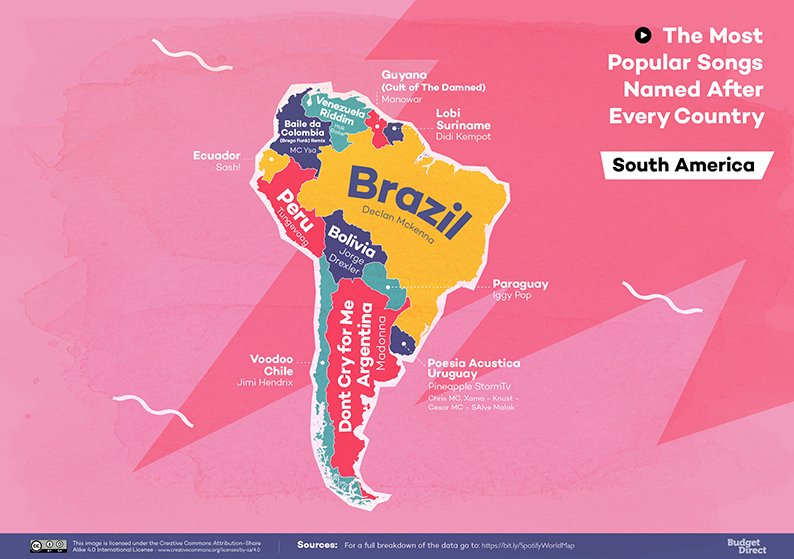
The most-listened-to country name song in Europe is actually about a girl named Georgia, but maybe she’s called that because she is from Georgia?
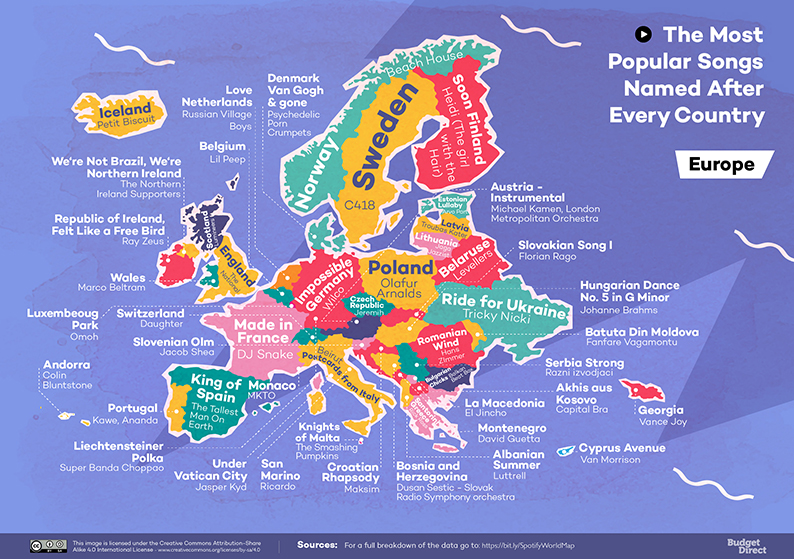
Moving on to the Middle East and Central Asia, how do you put Kazakhstan into a song? You just write an ambient instrumental piece about it with no lyrics, as Brian Eno did!
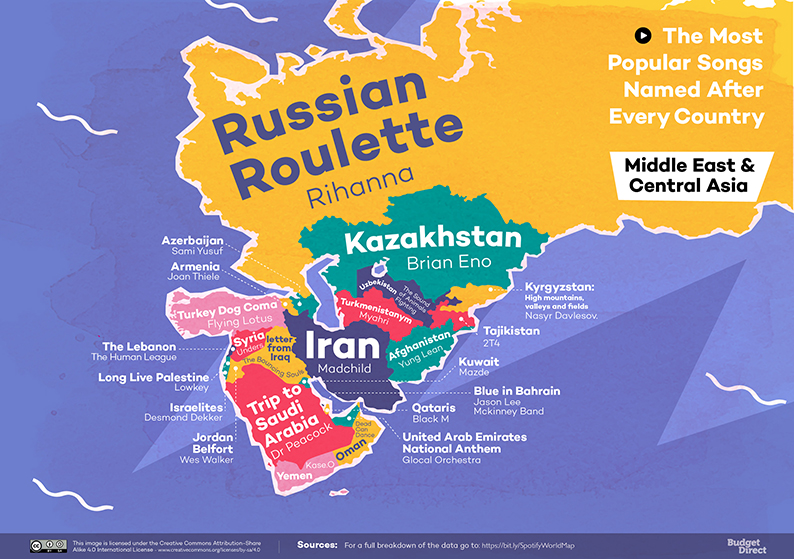
The most-streamed song in Africa, apart from Walk Like An Egyptian, is Frank Ocean’s saucy tale of a boy from Sierra Leone whose teen romance quickly turns to teen parenthood!
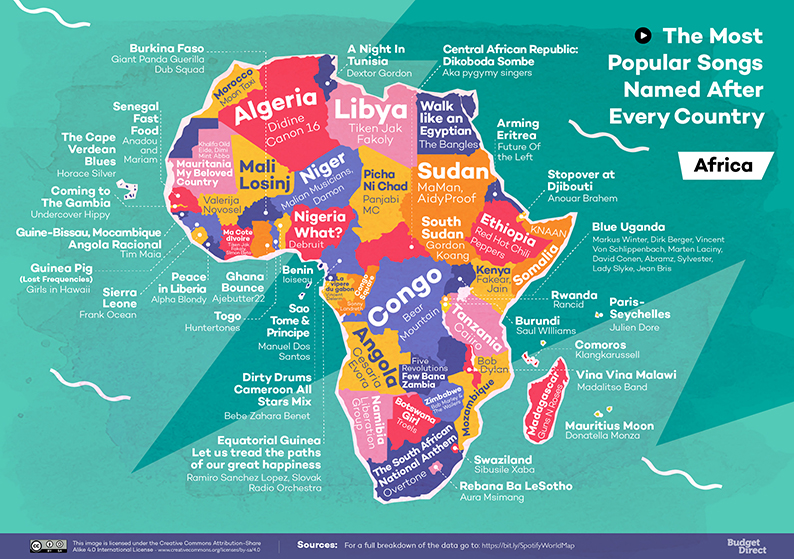
In Asia and Oceania, the Kingdom of Tonga is represented by one of the sweetest slivers of music the map. A Tonga Da Mironga Do Kabulete is a short samba by guitarist Toquinho with the great poet Vinícius de Moraes.
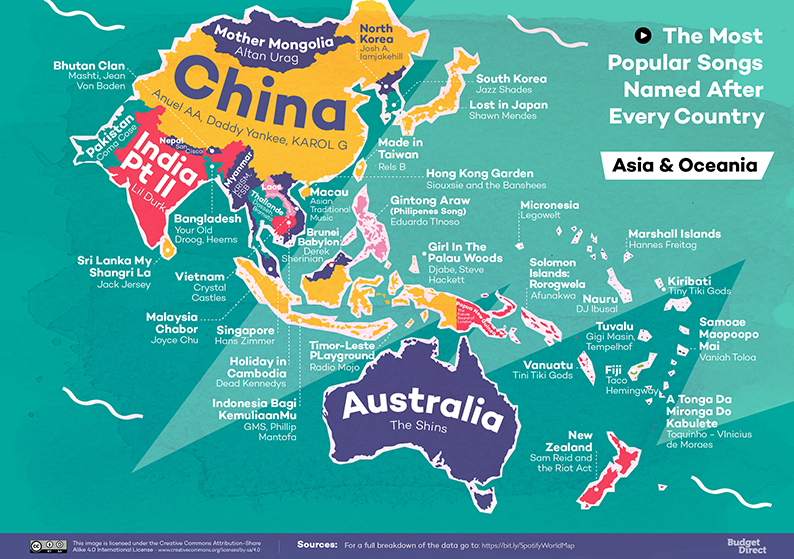
We hope you enjoyed this slice of audio armchair travel. Now, tell us, which songs would you replace if you could add your favorites?







